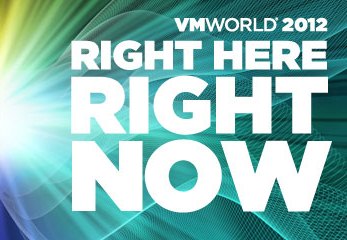 It’s VMworld 2012 time and with it come some exciting changes. So what do today’s VMware announcements mean to us in the virtualization community? I’m sure that you’ve already seen the news that with the upcoming version 5.1 release of VMware vSphere that the game has changed quite a bit.
It’s VMworld 2012 time and with it come some exciting changes. So what do today’s VMware announcements mean to us in the virtualization community? I’m sure that you’ve already seen the news that with the upcoming version 5.1 release of VMware vSphere that the game has changed quite a bit.
There are a few key pieces that came to light among the many differences that vSphere 5.1 presents. Not just from the technology perspective, but also in the area of licensing which is great news to many.
VMware Licensing in vSphere 5.1
Significant changes were put forward regarding the licensing of vSphere core products and the supporting infrastructure tools. What it means to us in the user and consultant community is that we have access to more products, with more features, using the same level of licensing we hold today.
Here is the PDF from the VMware web site to describe the new features and pricing models: http://www.vmware.com/files/pdf/vsphere_pricing.pdf
By moving back to host CPU licensing, VMware has opened the door to more liberal use of virtual resources for us as the consumer.
What about vRAM?
Some called it the vTax, and others just chalked it up to a different way to get to the same cost to their organization. From those whom I’ve worked with and spoken to, it didn’t necessarily require them to buy more licenses to run the same amount of hosts and guests.
That being said, there was an explosion of questions about the vRAM licensing model as it was introduced in the VMworld 2011 keynote. The impact of the community uprising was so great that it prompted VMware to modify the licensing by expanding the resource allowances in each of the licensing tiers.
Clouds in the Forecast
Two of the top reasons for limited adoption of the vCloud suite of products by many organizations was either cost or requirement, or for some it was both.
VMware has eased that transition today by making their Enterprise+ licenses an automatic upgrade to the vCloud Standard product line. By removing or lowering the cost barrier, I imagine that a lot of Systems Architects (myself included) are preparing their migration plan this week as a result.
Some Key Changes
As noted in the document, the new licensing model applies to all new purchases of vSphere 5.0 and 5.1 as well as vSphere 4.x upgrades to the 5.x product version. The only thing that is left to be dealt with is for existing 5.0 product owners who wish to modify their licensing to the new method. I am sure that there will be some more detail available shortly on that path and whether there are any costs associated to it.
Features that were available to higher editions have now become more widely available. Physical resource limits obviously top this list and for those who like to really stretch their dollar and fully leverage their physical resource pools, this is spectacular news.
As the table shows, the previous limits on cores per processor and physical RAM per host have been changed to unlimited. Given the growth in cores per processor in the market, this was perfect timing as we are most likely going to see some spectacular changes in that technology during the life cycle of our VMware vSphere 5.1 environments and even more exciting changes beyond.
In the edition lineup table we see the overall features which are present in each version including the features that were newly available in vSphere 5.0 which were Storage DRS and SR-IOV (see a great article from Scott Lowe on SR-IOV here: http://blog.scottlowe.org/2012/03/19/why-sr-iov-on-vsphere/)
As we see in the new licensed feature list, vShield Endpoint has now been bundled into the core product across all editions along with Fault Tolerance (FT), Storage vMotion and Data Recovery, plus the list of new features specific to 5.1 pretty awesome. Not least of which is the introduction of vSphere Replication; a long sought after piece to the BCP and multi-site protection puzzle.
I’ll be putting together a features post which will dive deeper into the new vSphere Replication. That is going to be an exciting feature which is clearly a sign that VMware is stepping up their participation in the overall environment management above and beyond the previous approach. Not only is this a huge leap towards private and hybrid cloud computing, but it is also a shot across the bow of many of the replication and recovery vendors out there today.
Managing the vSphere 5.1 Environment – vCenter and Acceleration Kits
The servers are only as good as the management components that tie them together; that is where vCenter comes into play. Just as was offered with the 4.x environments, the vCenter product comes in various flavours with associated feature sets based on requirement and of course with cost rising along with the feature set.
It is heavily encouraged that you and your team review your requirements and match those to the appropriate versions of the management products to meet those needs. The vCenter 5.1 products do not differ greatly from 5.0 versions currently available, but the overall architecture is much more integrated.
Acceleration kits are also a new toolkit item which allows us to bundle environmental features with purchase, and then they become standalone components which can be updated and managed via SnS separately going forward.
Much more to come so stay tuned, and keep your eyes here at the DiscoPosse and on VMware as more awesomeness is delivered in the coming days.



